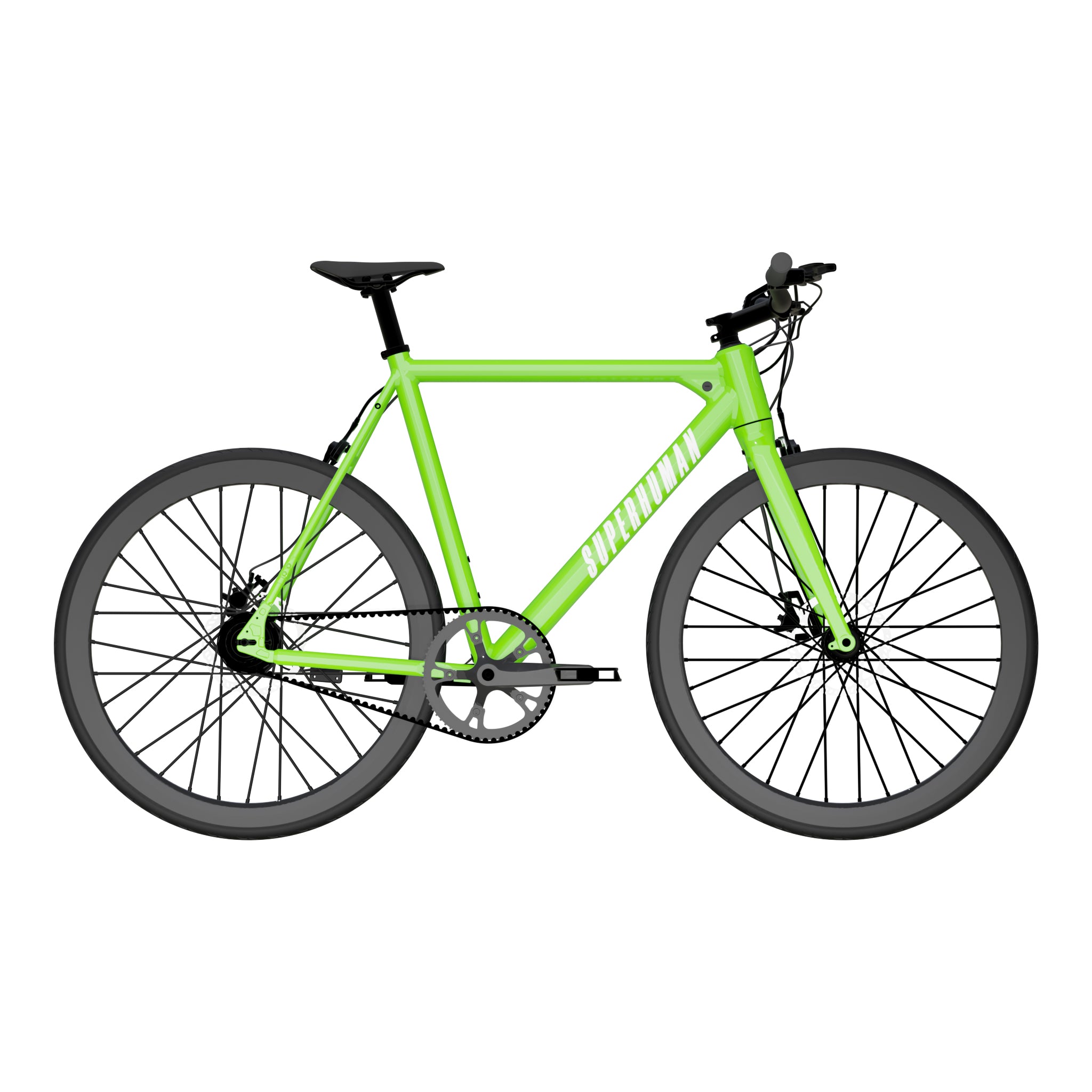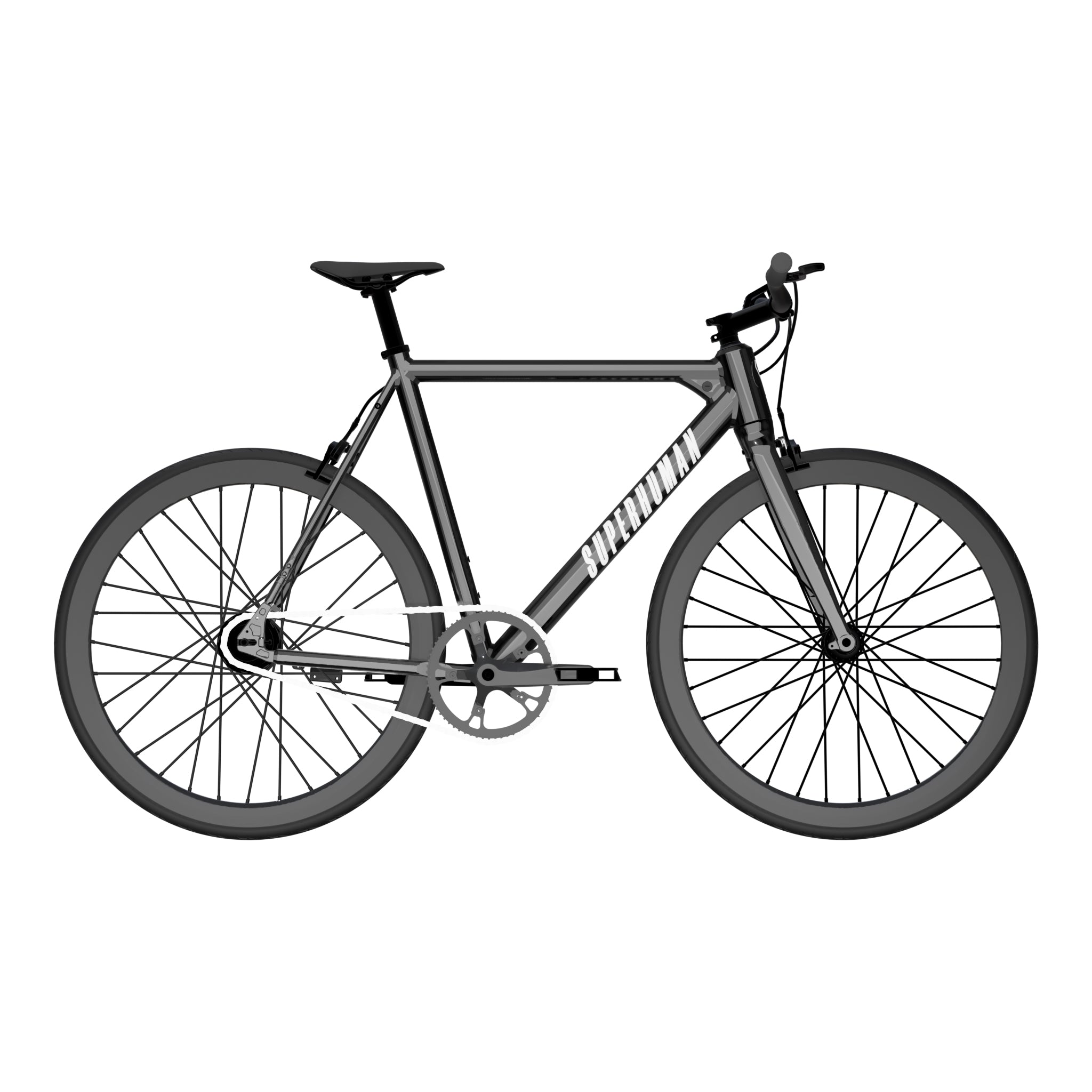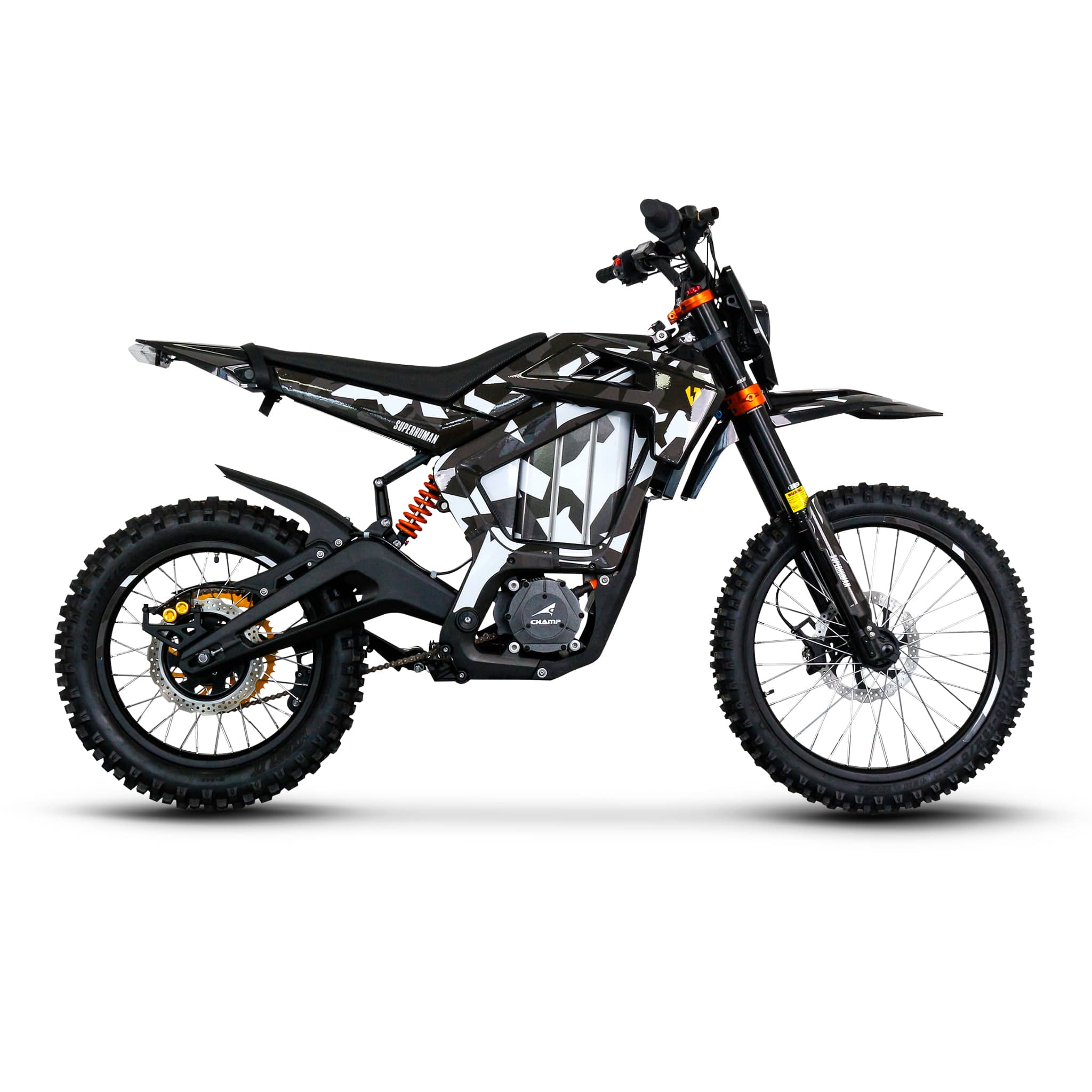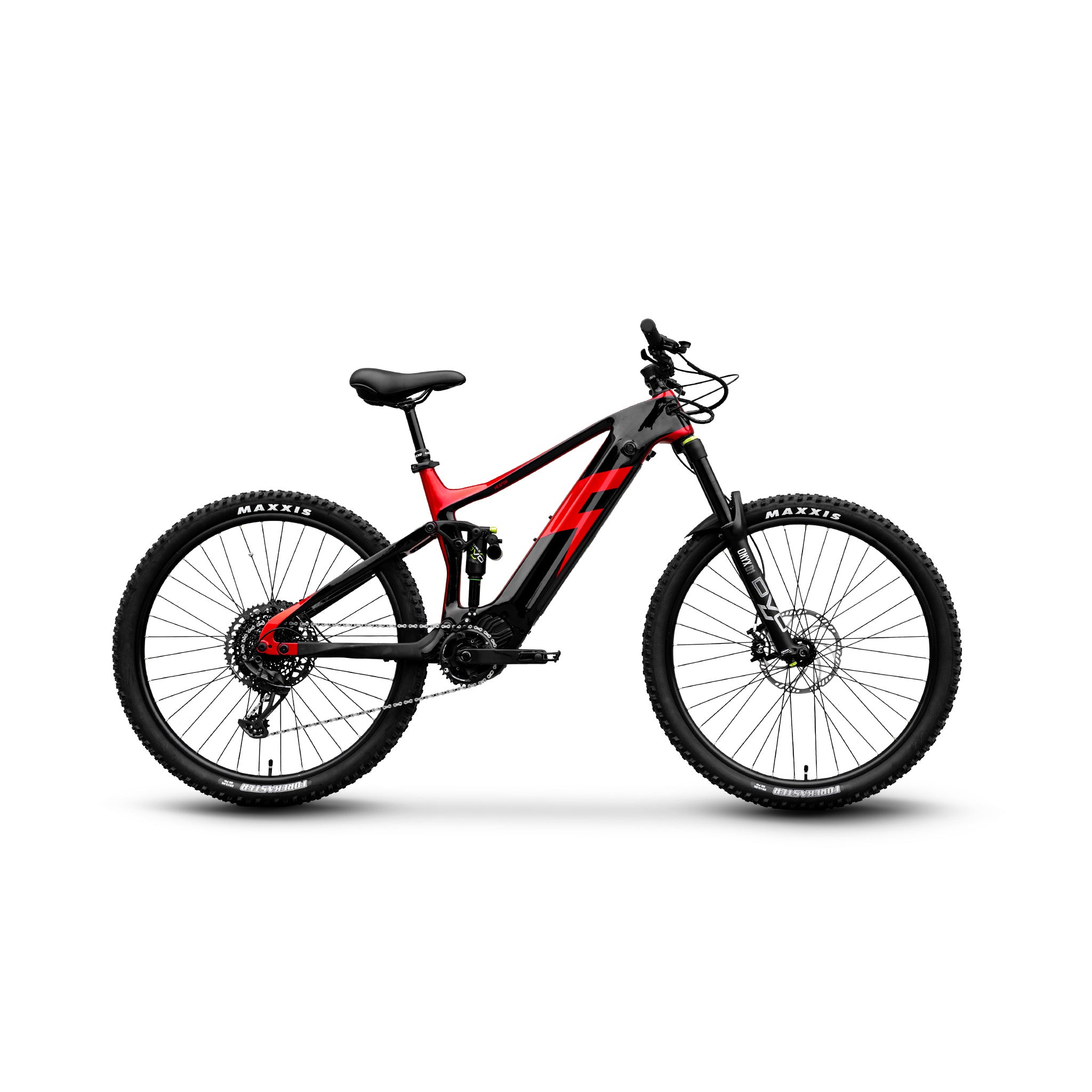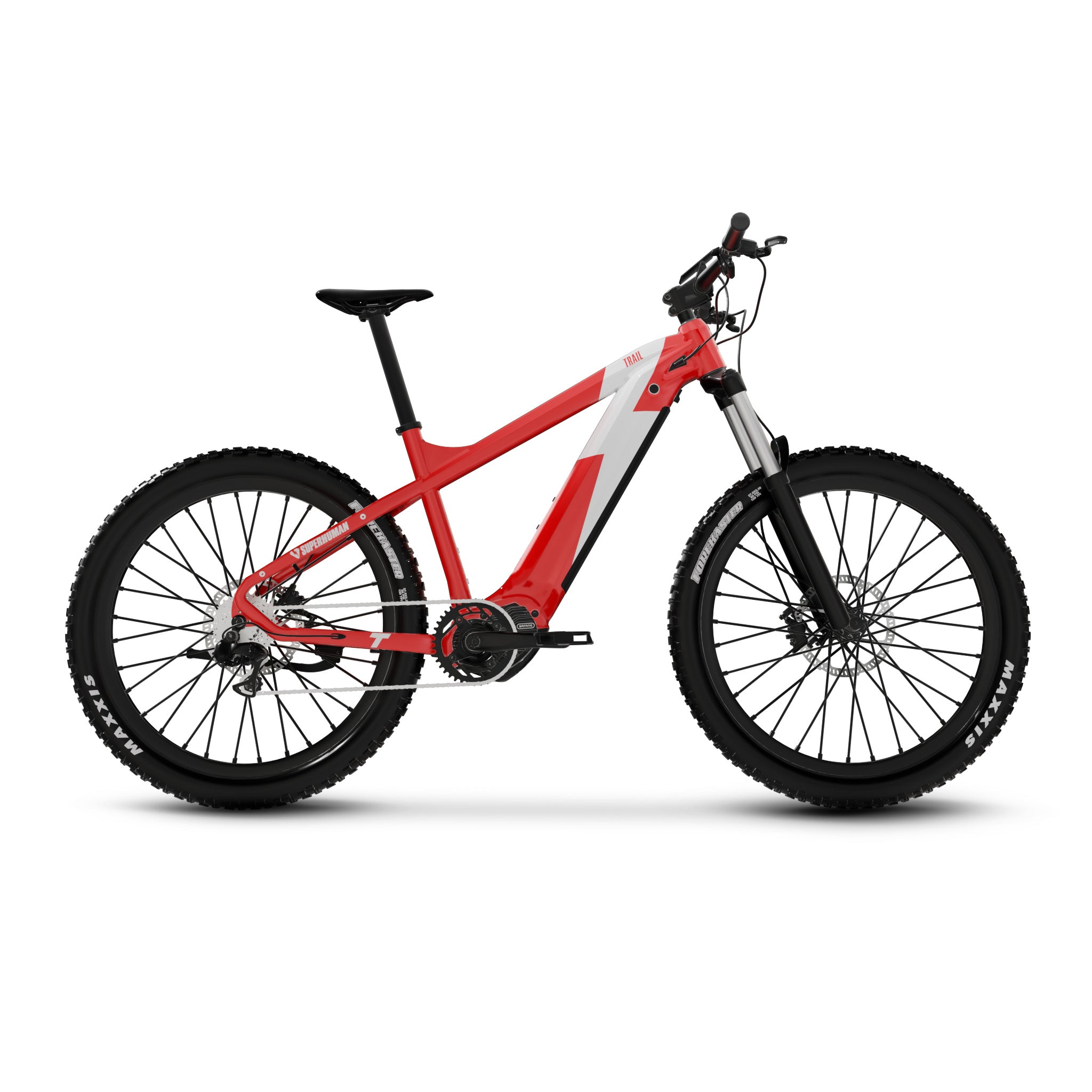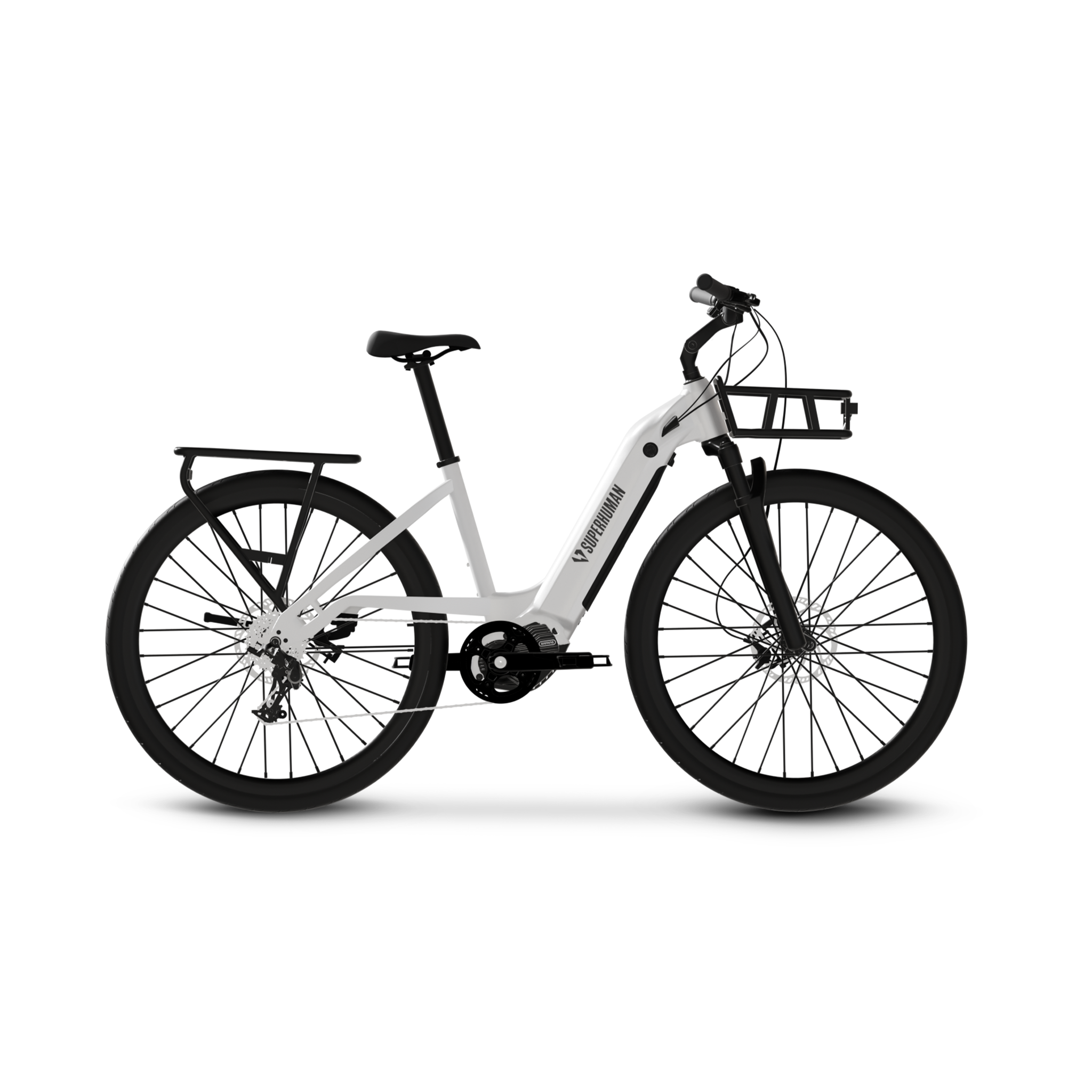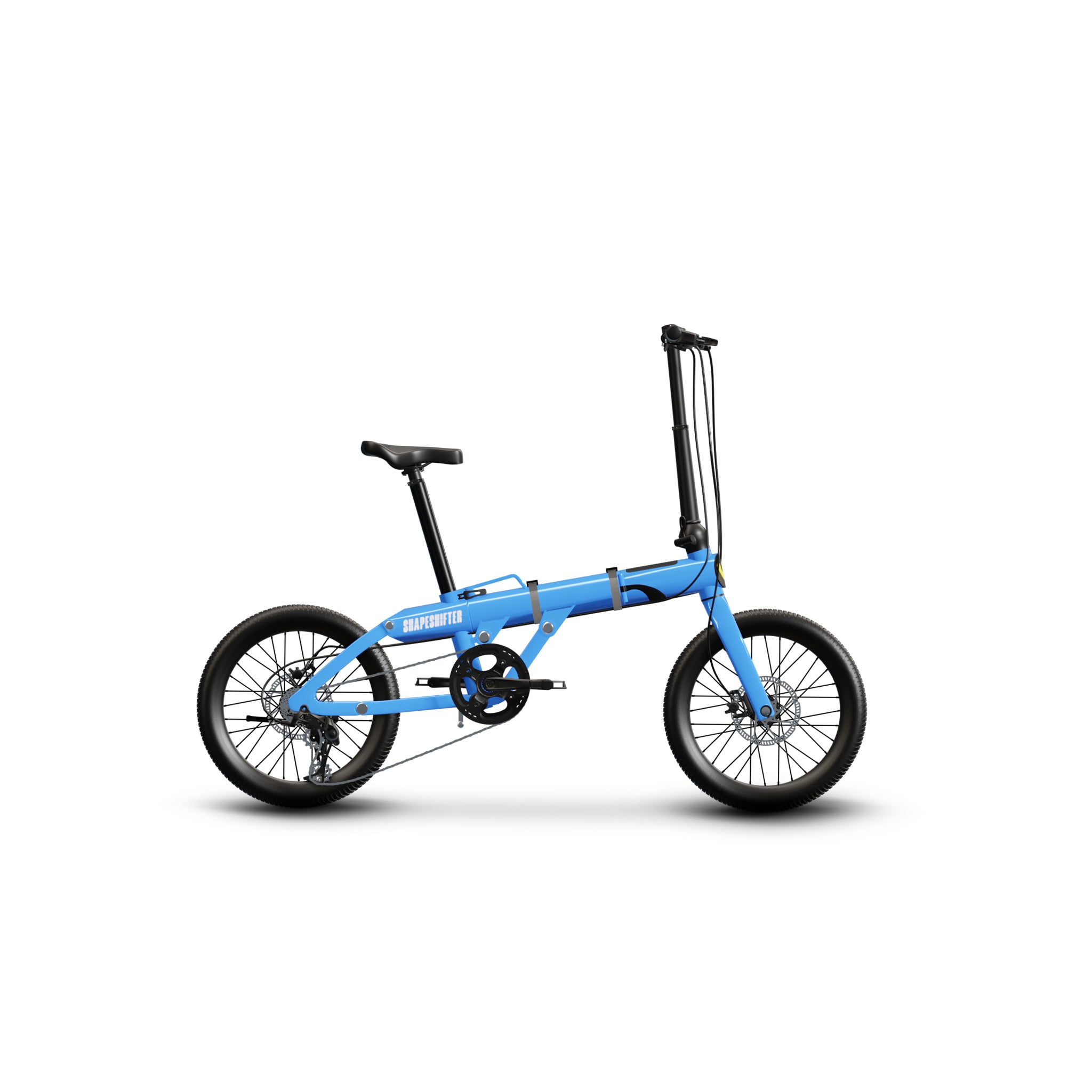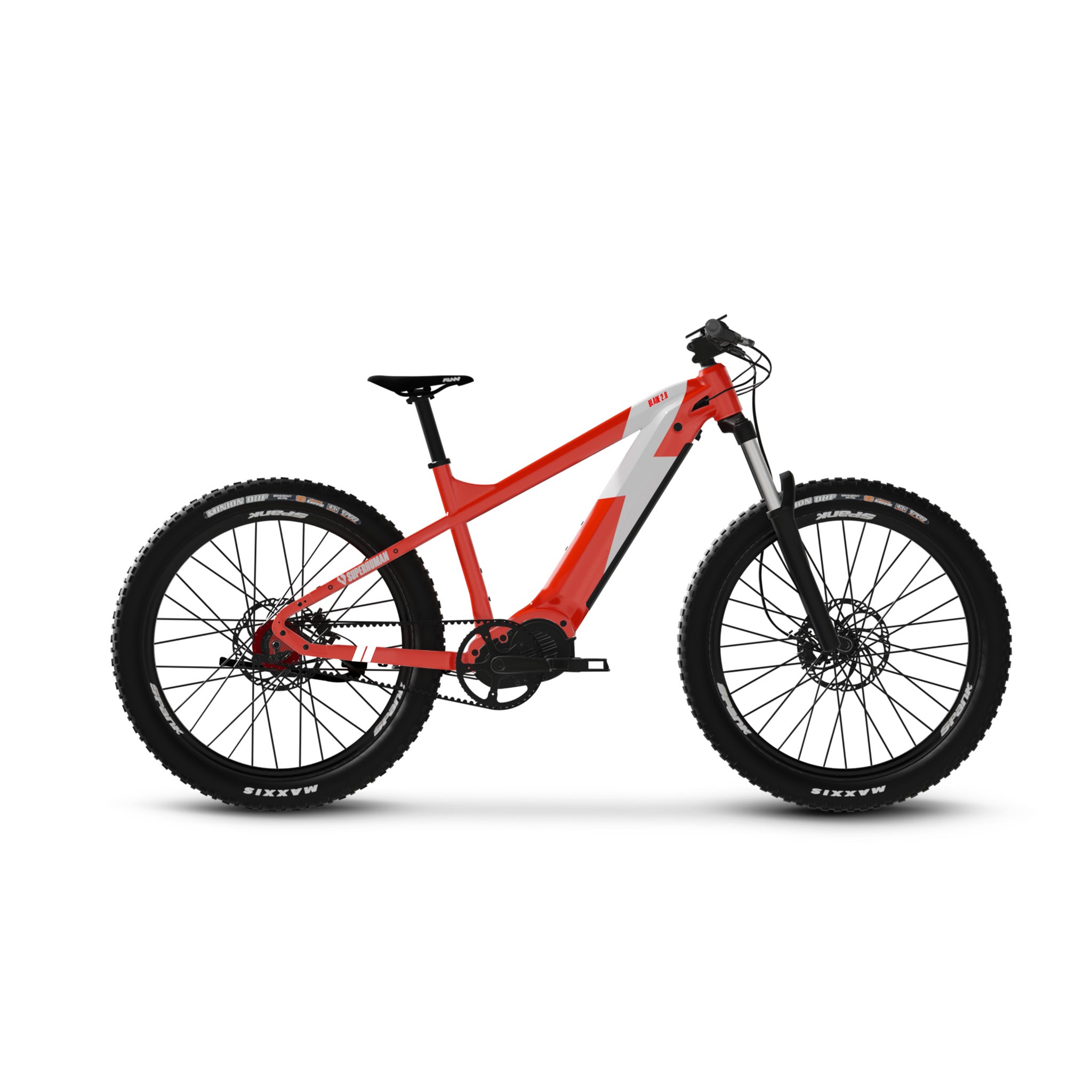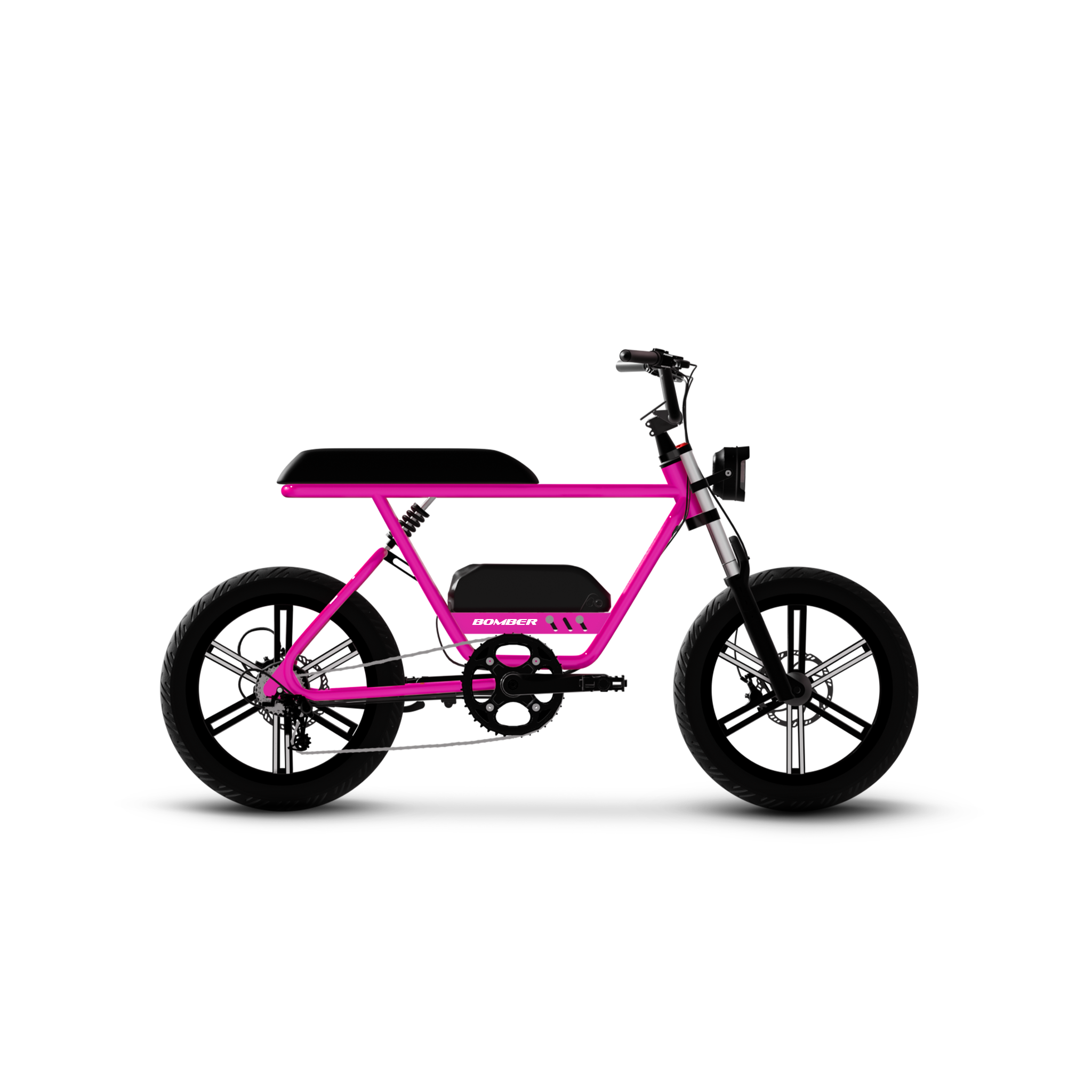🚲 Pro-Level Bike Maintenance Guide for New Riders
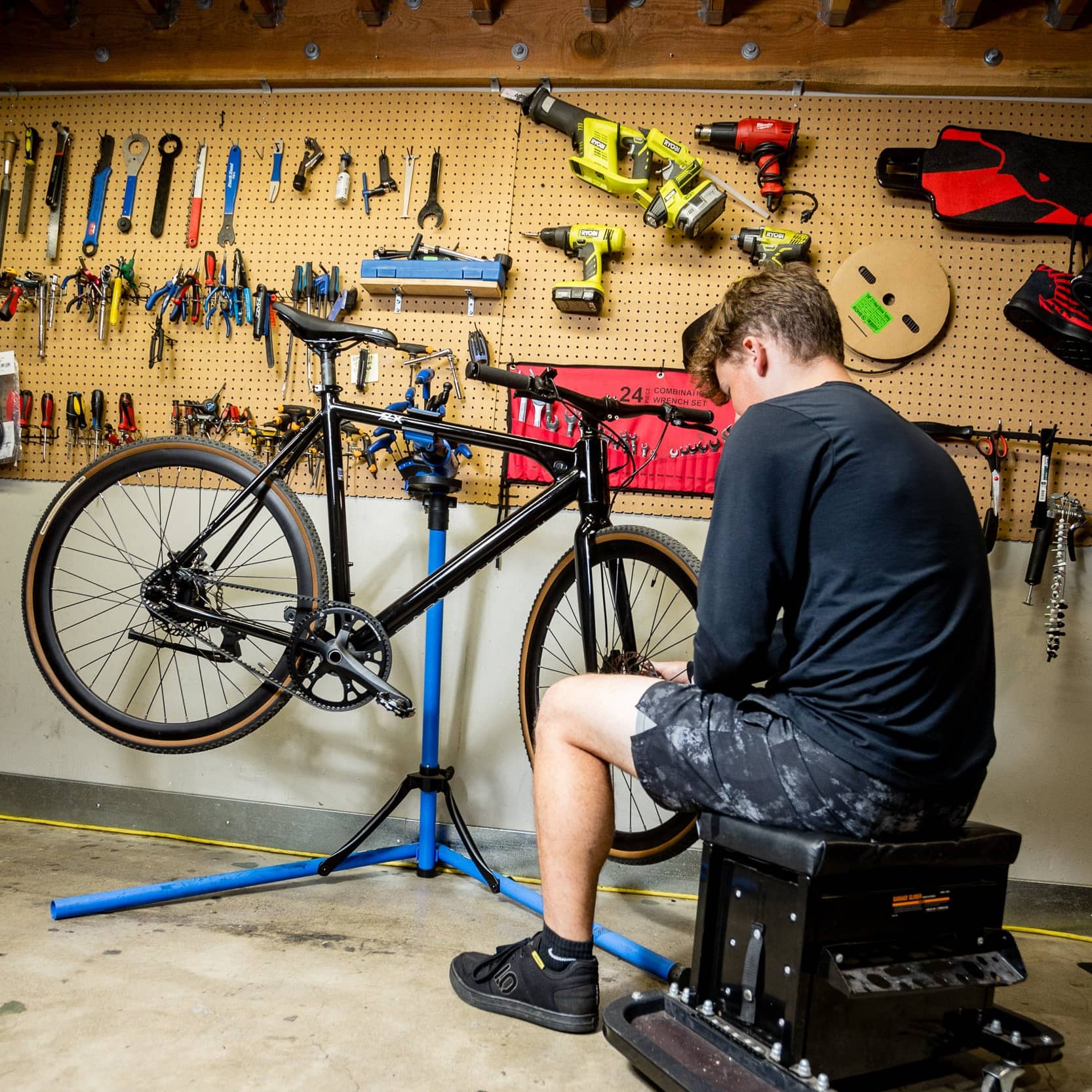
Advanced habits that keep your bike whisper-quiet, safe, and adventure-ready
Congrats on owning a bike (or eBike)! Here’s a deeper, real-world guide for keeping it dialed. These are exactly the checks, tips, and tricks we use in the shop to keep bikes (and customers) happy.
🔑 1️⃣Clean Smart — Protect Bearings & Electronics
Why it matters: Grit eats parts like sandpaper; water corrodes bearings and electronics (especially on eBikes). So clean often — but don’t drown it.
Pro trick: Use a waterless wash (like Muc-Off Waterless Wash) for quick, frequent cleanings. Mist it on the frame, wipe gently with a soft microfiber cloth, and boom — fresh bike, zero mess.
Deep clean?
Once in a while (or after muddy rides), rinse gently with low-pressure water — never use a power washer. Always dry the bike thoroughly, especially around the bottom bracket and motor areas on eBikes.
Why: Dirt is the #1 bike killer. Water, if used carelessly, is #2.
How:
- For daily grime, a quick wipe-down with Muc-Off Waterless Wash saves hours later.
- Use soft microfiber cloths — never rough shop rags that can scratch paint or push grit into moving parts.
- For caked-on mud, rinse gently with low-pressure water — never aim water at bearing seals, motor housings (eBike), or the bottom bracket.
- After wet washes, spin the cranks, bounce the bike lightly, and towel-dry hidden spots. A blast of compressed air (gently) works wonders if you have it.
- If your bike has a suspension fork or dropper seatpost, the tiny seals at the moving parts gather grit fast.
Pro tip: After dusty or muddy rides, wipe stanchions with a clean rag and a bit of suspension fluid. This extends seal life and keeps travel smooth

Muc-Off Ebike Essentials Kit
🔑 2️⃣Chain & Drivetrain — The Smooth Operator
What pros do:
Clean the chain before you lube it — even a quick wipe makes a difference.
T-9 Bicycle Lube is a solid “set and forget” option: it penetrates deeply and leaves a protective film that won’t wash away in the first puddle.
Spin the cranks backward while applying one drop per link, wait a few minutes, then wipe the chain dry with a clean rag.
Pro trick: Wipe once, wait 5 mins, wipe again — less dirt sticks later.
How often?
Every 100-150 miles, or after every wet ride.
Pro Steps:
- Use a separate rag for the cassette and derailleur pulleys.
- T-9 Bicycle Lube is excellent because it seeps deep and leaves a corrosion barrier — especially good if you store the bike in a garage.
- After lubing, spin the chain through all gears. This helps spread lube evenly across the cassette teeth and derailleur pivots.
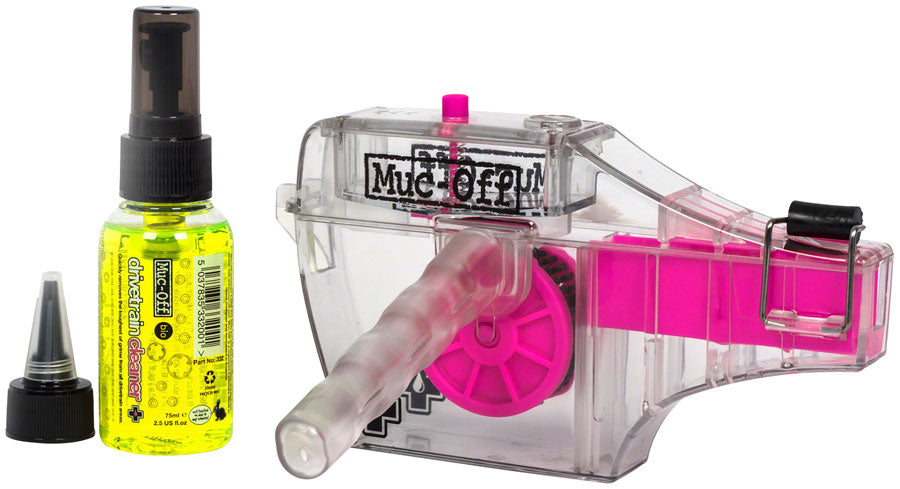
Muc-Off X-3 Dirty Chain Machine Cleaning Kit
🔑 3️⃣Brakes — Quiet, Strong, and Predictable
This is where new riders skip — but you shouldn’t.
What to watch:
- Pads: Rim brake pads should have clear grooves; disc brake pads should have at least 1mm of pad material left.
- Feel: Levers should engage firmly, not pull to the bar.
- Sound: A bit of squeal when wet is normal, but constant squeaking usually means contamination or misalignment.
Pro trick:
For squealing disc brakes, lightly sand the pads and rotor with fine sandpaper, then clean with isopropyl alcohol — it often fixes the noise instantly.
✅ Pad wear:
Rim brakes: Pads should have grooves visible. Replace if the grooves vanish or the rubber looks hardened and shiny.
Disc brakes: Pads must have at least 1–1.5 mm of material. If you hear metal-on-metal scraping, stop riding — metal pads against the rotor ruin both parts.
✅ Rotor condition:
Fingerprints and road film can cause squeal.
Pro tip: Wipe rotors with isopropyl alcohol regularly — especially after transport in a car or after touching them with bare hands.
Inspect for deep grooves or a blue tint (overheating). Warped rotors can usually be trued with care but severe warps mean replacement.
✅ Brake feel:
Levers should feel firm, with little sponginess. Spongy disc brakes mean air in the hydraulic line — time for a bleed.
Rim brakes that feel mushy may have stretched cables or dirty housing — lube or replace.
✅ Pro Trick:
Lightly scuff brake pads with 120–220 grit sandpaper to remove glazing.
For disc brakes, bedding them in properly when new (10–20 gradual stops from medium speed) gives maximum power and silence.
Most bikes ship with brake levers at a factory default reach — often too far out for small or average hands. This reduces control and causes hand fatigue.
Pro tip:
Use the small reach screw (or dial) on your brake levers to adjust them so your
index finger naturally hooks the lever tip. It’s free and feels like a whole new brake system!
🔑 4️⃣Tire Care & Puncture Prevention
Why it matters:
Underinflated tires cause pinch flats and sluggish handling. Overinflated tires lose grip.
Pro habit:
Check pressure before every ride, or at least once a week — use a floor pump with a gauge. For eBikes, slightly higher pressure can help with extra weight.
Bonus protection:
Add Slime Tube Sealant inside your tubes — it seals small punctures instantly. For tubeless riders: always carry a plug kit or spare tube anyway — slime won’t seal big cuts.
Weekly:
Check tire tread for embedded glass or sharp debris. Pluck it out with a pick or tweezers.
Bonus:
Add Slime Tube Sealant once per season or after a flat repair — it stays liquid inside the tube and seals punctures up to 1/8".
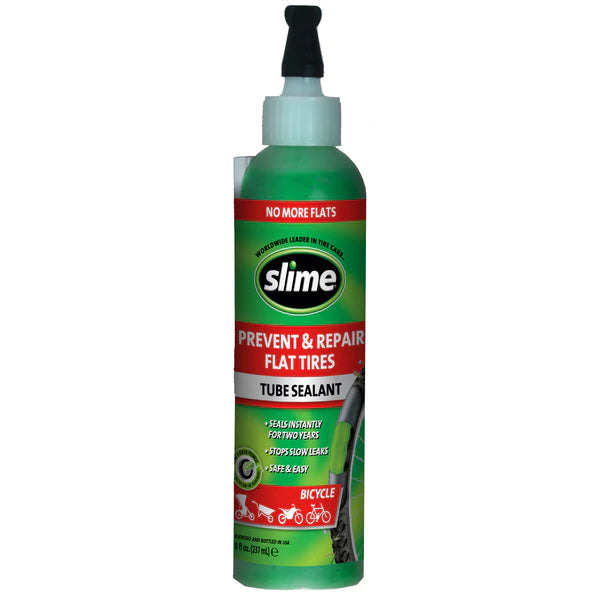
Slime Sealant 8floz and 16oz
🔑 5️⃣Smart Post-Ride Care — By Surface
Indoor:
Best:
Cool, dry garage or indoor hallway.
If storing near a water heater, avoid moisture drips.
Keep tires off damp concrete floors — use a stand or hang the bike.
Long-term:
Clean and lube chain before storage.
Store tires slightly inflated to prevent sidewall cracking.
For eBikes: store the battery half-charged, ideally indoors, away from freezing temps or direct heat.
🔑 6️⃣Pro Storage Habits — Prevent Rust & Damage
🚴 After asphalt rides:
- Wipe down rims and drivetrain. Asphalt grime is oily and clings to chains.
🏖️ After sand or beach
rides:
- Sand hides in the chain and derailleur pulleys. Flush gently with a low-pressure hose or damp cloth. Avoid spraying directly at motor or bearings.
- Dry thoroughly and re-lube chain immediately with T-9 — salt + sand equals corrosion overnight.
🌲 After dirt or gravel:
- Let mud dry, then brush off. A soft detailing brush is your friend.
- Check fork stanchions and shock seals for grit. Wipe carefully — never push dirt into seals.
- Inspect chainring teeth for stuck pebbles or twigs.
🔑 7️⃣Bolt Check & General Peace of Mind
Pro rule:
Once a month (or every 10 rides), inspect these:
- Stem bolts
- Handlebar clamp
- Seatpost collar
- Crank bolts (if applicable)
- Axle skewers or thru-axles
Pro tip:
Many people just “hand-tighten” bolts. On a modern bike,
over-tightening can crush carbon or alloy parts; under-tightening risks
catastrophic failure. Use a torque wrench for stem, handlebars, seatpost clamp,
and crank bolts — match specs from your bike manual. Overtightening is worse
than slightly loose. Most bolts are snug at 4-6 Nm.
Pro insight:
Monthly: Quick check with a torque wrench or multi-tool. Pay special attention to the stem bolts and crank arms.
For carbon frames or parts: always use a torque wrench — overtightening is the #1 mistake home mechanics make.
🔋 8️⃣E-Bike Battery Care & Longevity Tips
Your battery is the heart (and biggest investment) of your
e-bike. Treat it right, and it’ll deliver strong power and long range for
years. Here’s how top mechanics and seasoned riders keep theirs in peak shape:
✅ Charge Smart
- Don’t always charge to 100%: For daily commuting, charging to ~80–90% reduces cell stress and prolongs lifespan. Top off to 100% only before long rides.
- Unplug when full: Avoid leaving the charger plugged in overnight for days on end.
- Use the charger that came with your bike: Cheap replacements can damage the cells or the BMS (battery management system).
🛡️ Store it Properly
- Ideal storage level: If storing for weeks or months, leave the battery at ~50–70% charge.
- Temperature matters: Store the battery indoors, away from freezing temperatures (< 32°F / 0°C) or extreme heat (> 95°F / 35°C).
- Never leave in a hot car: High temps are a battery killer — permanent capacity loss can happen fast.
⚡Inspect & Clean Contacts
- Monthly wipe-down: Remove the battery, gently clean the metal contacts with a dry cloth — no moisture or sprays.
- Check for corrosion: A light dab of dielectric grease on contacts can prevent corrosion in humid climates.
🔑 Be Gentle When Removing/Installing
- Don’t force or drop the battery pack — impacts can damage internal cells or the case seals.
- Always lock it back securely to prevent rattling and accidental disconnects while riding.
📈 Keep it Active
- Even in winter, charge and use your battery at least once a month. Lithium cells like moderate use — deep hibernation can shorten their life.
🧰 Pro Tip:
If you ride in the rain often, consider a neoprene battery cover for extra weather protection — especially for downtube-mounted packs.
Treat your battery well and you’ll get maximum miles, maximum smiles — and avoid pricey replacements!
E-bike owners often charge the battery but ignore the terminals. Dirt, moisture, or oxidation on the contacts can cause connection errors or shorten battery life.
Pro tip: Once a month, remove the battery and gently clean contacts with
a dry cloth. Never spray liquids near them.
⚡️ Expert Final Tip
Routine beats rescue: 5 minutes after each ride saves 50 minutes at the workbench later.
Stay ahead of dirt, check your brakes and bolts regularly, and keep the chain happy — your bike (and wallet) will thank you.
🧰 Pro-Level Tips Few Riders Know
✅ When shifting feels clunky: Clean your derailleur pulleys. Dirt there causes 50% of “bad shifting” complaints.
✅ Noisy creaks: 80% of mystery creaks come from the seatpost or pedals. Remove, clean, grease lightly, re-install.
✅ Chain life: Replace your chain when it hits 0.75% wear — a cheap chain saves an expensive cassette. A $10 chain checker tool pays for itself fast.
✅ Keep a small bag with a spare tube (even if you use Slime), tire levers, and a mini pump or CO₂ inflator. Flats happen far from home.
⚙️ Annual Pro Service
Even with great home care, a yearly pro tune-up keeps things perfect:
- Hubs get fresh grease
- Bearings are checked
- Wheels are trued
- Drivetrain is deep cleaned
- E-bike firmware is updated (for some brands)
Bikes (and eBikes) love gentle, frequent TLC over big repairs later. Keep it clean, keep it lubed, check your air, and listen for weird sounds — you’ll ride happier and safer.
✅ Pro Mechanic Tune-Up Checklist— For Your E-Bike
⚡️ Before Every Ride (2 min)
✔️ Check tire pressure (adjust to recommended PSI on sidewall).
✔️ Quick brake check — squeeze levers, ensure firm feel, no sponginess.
✔️ Visual check: spin wheels, look for wobble, check for glass or thorns in tires.
✔️ Battery: Confirm it’s seated securely & has enough charge for your ride.
Pro tip: Keep a floor pump & gauge by your door. It’s the cheapest way to avoid flats.
🗓️ After Every Ride (5–10 min)
✔️ Wipe down frame with Muc-Off Waterless Wash — removes sweat, road grit, salt.
✔️ Wipe chain & cassette with a dry rag if dusty or sandy.
✔️ Spot-check brake pads for embedded debris.
✔️ Store bike inside or under cover, out of direct rain or sun.
Post-sand/gravel: Use a soft brush to remove sand from derailleurs & pulleys.
🔁 Weekly (or every 100 miles)
✔️ Full chain clean & lube:
- Wipe old dirt.
- Apply T-9 Bicycle Lube, spin chain backward, wipe excess.
✔️ Check all bolts: stem, handlebar, seat clamp, crank arms. Use a torque wrench if possible.
✔️ Inspect tires: Look for cuts, sidewall damage.
✔️ Check brake pads for wear: At least 1mm remaining.
✔️ Wipe rotors with isopropyl alcohol to prevent squeal.
📅 Monthly
✔️ Check chain stretch: Use a chain checker tool. If over 0.75% wear, replace chain to protect cassette.
✔️ Inspect wheel trueness: Lift bike, spin wheels, check for wobble. Minor wobbles can be trued by a shop or careful home mechanic.
✔️ Inspect brake hoses/cables: Look for cracks, fraying, leaks (for hydraulics).
✔️ Top up Slime Tube Sealant if you run tubes. Check by deflating slightly — if you hear squish, you’re good. If dry, add fresh.
✔️ Check battery contacts: Wipe with a dry cloth. No water!
🗓️ Seasonal (every 3–6 months, or every 500–750 miles)
✔️ Deep clean drivetrain: Remove chain if possible, soak in degreaser, scrub cassette & chainrings.
✔️ Inspect bottom bracket & headset for play: Hold front brake, rock bike back & forth. Any knocking? Time for a shop check.
✔️ Brake system: If hydraulic, consider a brake bleed. If mechanical, check cable tension & housing condition.
✔️ Suspension (if you have it): Clean stanchions, check seals, wipe grit.
✔️ Firmware check (eBike): Some brands have updates — check app or dealer.
🛠️ Pro-Level Annual or 1,000-mile Tune-Up
Done by a shop or an advanced DIYer:
✔️ Hub bearings serviced
✔️ Bottom bracket checked/greased
✔️ Headset bearings cleaned/greased
✔️ Wheels trued properly
✔️ Hydraulic brakes bled
✔️ Motor & battery software check (if brand supports it)
Routine care is cheaper than new parts. A chain is $20. A cassette is $90+. Stay ahead!
Superhuman Bikes
Power
Top Speed
Range
Weight
Power
Top Speed
Range
Weight
Peak Power
Top Speed
Range
Weight
Power
Top Speed
Range
Weight
Power
Top Speed
Range
Weight
Power
Top Speed
Range
Weight
Power
Top Speed
Range
Weight
Power
Top Speed
Range
Weight




